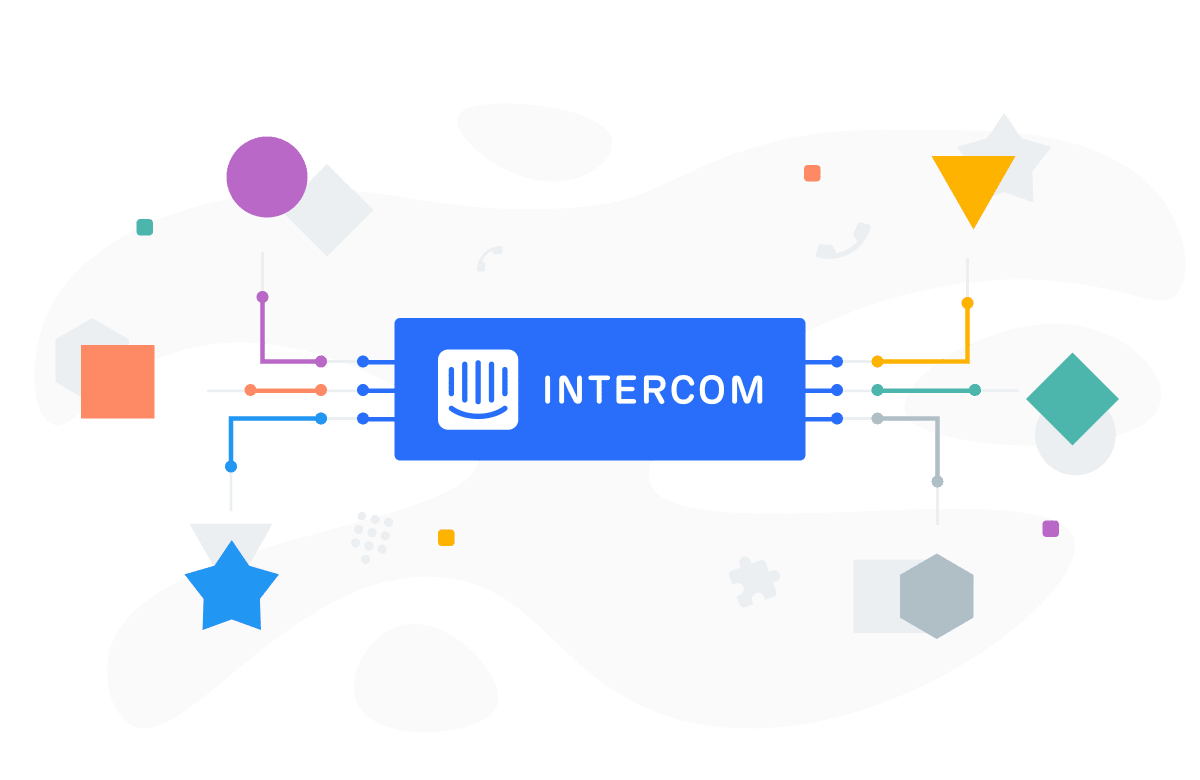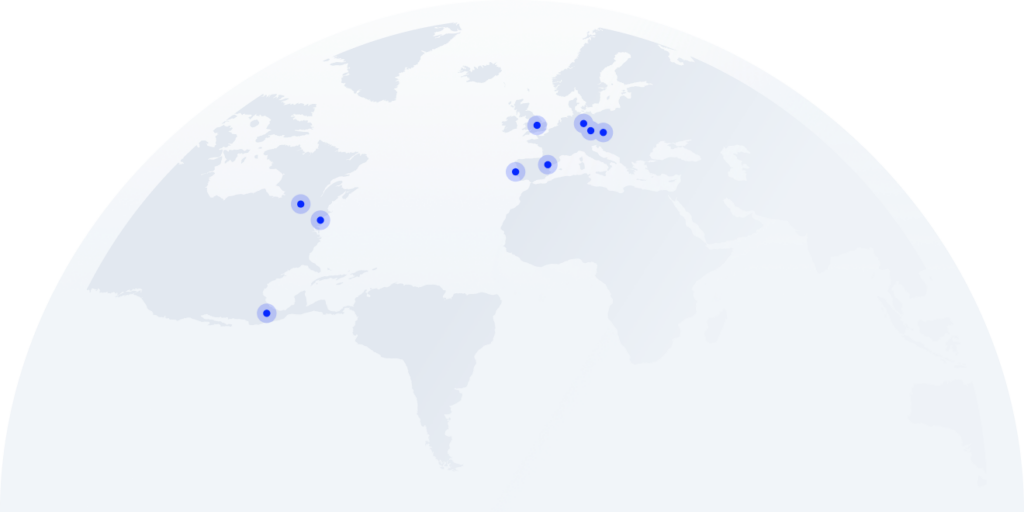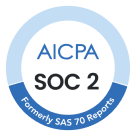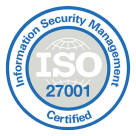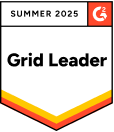Teams using built-in calling tools see 36% more deals closed and generate 129% more leads within a year¹. But, you’ve got to use the right calling integration, or you’ll end up wasting time and money.
So to bring you this list of the best calling apps for HubSpot. we reviewed over a dozen tools claiming HubSpot VoIP integration, comparing them across criteria that matter: features, user reviews, pricing transparency, ease of setup, workflows.
And we asked the customer, because in the end, that’s who really matters.
Key Takeaways
- The best HubSpot VoIP integrations offer real-time sync, workflow automation, and in-HubSpot call data.
- Call monitoring tools like whisper and barge improve agent performance and team oversight.
- CloudTalk combines advanced features and native HubSpot integration with SMB-friendly pricing.
Close more deals and follow up faster with the right phone integration for HubSpot.
What is HubSpot VoIP integration?
HubSpot VoIP integration connects your phone system to your CRM, so every call, contact, and follow-up is logged automatically.
That means your reps always have the context they need—who they spoke to, what was said, and what to do next—without switching tools or taking notes. It works through a native or third-party integration, depending on your provider.
See how CloudTalk helps HubSpot teams make more calls and close faster.
10 Best Hubspot voip integrations for business in 2025
Looking for the Best VoIP Service to Integrate with HubSpot CRM? To help you cut through the noise, we’ve shortlisted 10 of the top HubSpot VoIP integrations for 2025.
Here’s a quick snapshot before we dive into the full list:
Cloudtalk
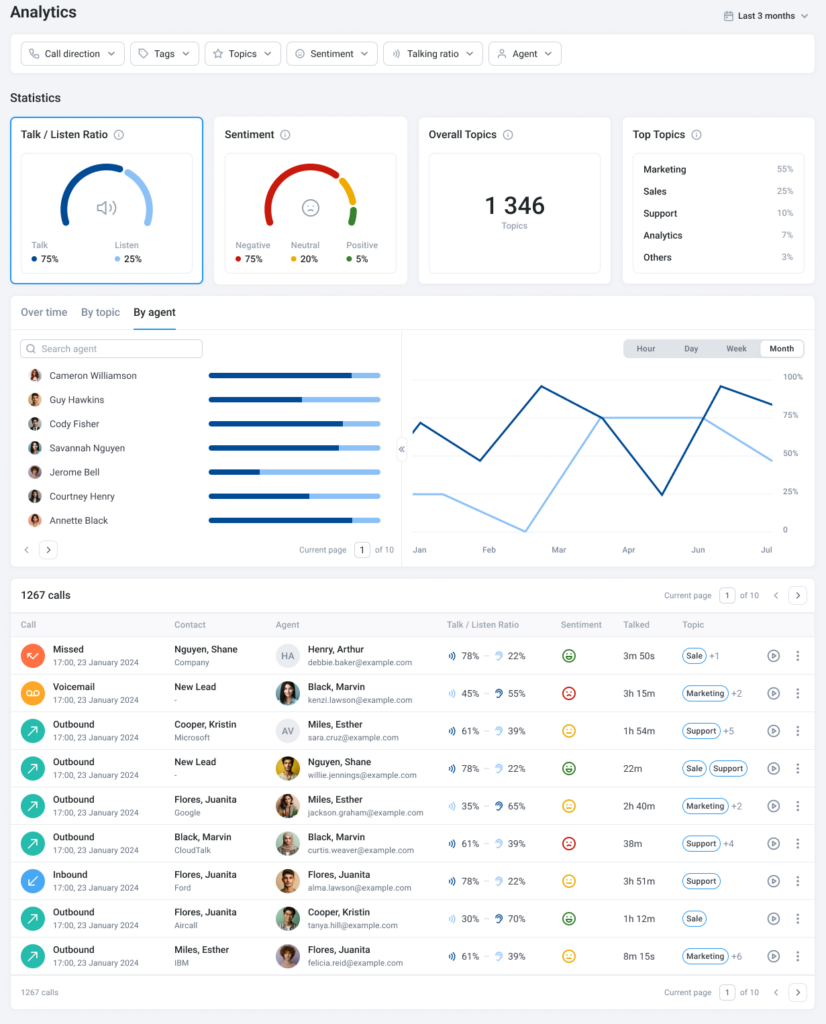
CloudTalk is trusted by 4,000+ businesses, and is a trusted Hubspot integration, recommended by Hubspot itself. It integrates seamlessly with 35+ tools, and has an open API that allows you to customize workflows and scale operations internationally with local numbers in 160+ countries.
Best for
SMBs and mid-market teams with high call volumes, especially sales and support teams needing automated, data-driven calling workflows
Best features
- Live Call Monitoring: Team leads can listen to active calls in real time to assess agent interactions and ensure service quality — all without interrupting the conversation.
- Coaching Mode (Whisper): Supervisors can offer private, mid-call coaching to agents during live conversations. The customer remains unaware, making it ideal for on-the-spot guidance or onboarding support.
- Call Intervention (Barge): Managers can step into live calls when necessary, offering immediate assistance to agents handling complex or sensitive issues.
- Wallboard: Track call center activity in real time with a visual dashboard that highlights KPIs like active calls, wait times, and agent availability — perfect for keeping teams on pace and performance visible.
Integrations
- HubSpot: Bi-directional sync keeps contact details, call notes, and engagement history up to date automatically, giving agents full context without switching tools.
- Salesforce: Connects seamlessly to log calls, surface insights, and enable click-to-dial within sales and support workflows.
- Zoho CRM: Supports workflow automation, contact sync, and deep analytics, helping teams personalize communication and spot trends.
- Pipedrive: Lets users manage calls directly in the CRM, log activities with custom rules, and track performance in real time.
Pros
- Ease of use: The interface is intuitive and streamlined, making it easy for teams to get up and running quickly.
- Scalability: As your team grows, CloudTalk makes it simple to add users, lines, and features without switching systems.
- Cost-effective: Offers advanced functionality at a competitive price, ideal for budget-conscious teams looking for high performance.
Cons
- Limited offline functionality: Because CloudTalk is cloud-based, poor internet connectivity can affect call quality.
- No video conferencing: Teams needing video conferencing will need to use a separate tool alongside CloudTalk.
Reviews
G2 average rating ~4.45/5; praised for CRM integration and ease of use².
When HubSpot recommended CloudTalk, we thought, ‘Why look further?’ The integration was there, the features made sense, and it addressed our biggest pain points.
AJ Pyper, Mortgage Advisor at My Mortgage Finder
Pricing
CloudTalk offers four pricing plans, each with its own set of features:
- Lite (19/user/month]): Includes unlimited US & Canada calling, business SMS, International Numbers, Call Recording, basic call analytics, and 24/7 email/chat support.
- Essential (29/user/month): It offers 1,000 domestic outbound minutes, 24/7 live support, advanced analytics, IVR, Skill-Based routing, Integrations + Open API.
- Expert (49/user/month): It includes features like Power Dialer, Smart Dialer, VIP Queues, WhatsApp Inbound & Outbound Messages, and Call Monitoring.
- Custom (Varies): This plan is tailored for businesses who need it, and includes custom onboarding, unlimited outbound calls with flat rates, enterprise-level security, and developer support.
Simplify your HubSpot workflows and supercharge team productivity with the right VoIP integration.
Aircall
Aircall is a cloud-based VoIP system designed to help support and sales teams manage customer conversations at scale. It integrates natively with HubSpot, providing automation, real-time insights, and simple call management from directly inside your CRM.
Best for
SMBs looking for a fast, flexible solution to unify phone support, track call performance, and integrate seamlessly with HubSpot workflows.
Best Features
- Click-to-Call & Screen Pop: Agents can place and receive calls with one click from HubSpot, while caller details automatically populate before pickup.
- Insight Cards: Aircall pulls relevant HubSpot data into every inbound call, so agents know exactly who they’re speaking to—and what’s next.
- Call Tagging & Notes: After each call, users can tag contacts, log notes, and assign follow-ups, all without leaving the HubSpot interface.
- HubSpot Automation: Trigger workflows based on call outcomes—like sending a follow-up email or assigning a task—to keep pipelines moving.
Integrations
- HubSpot: Native integration supports click-to-call, real-time sync, call logging, and automation triggers within the HubSpot ecosystem.
- Salesforce: Syncs calls, notes, and contacts to give full visibility across sales stages.
- Intercom & Zendesk: Streamlines support by tying voice conversations to tickets and live chats.
- Pipedrive, Shopify, and 100+ others: Aircall plays well with a wide range of CRMs, helpdesks, and business tools via direct and Zapier integrations.
Pros
- Quick setup: Aircall can be deployed in hours, not days — no hardware or IT support needed.
- Rich HubSpot experience: The HubSpot CTI widget is one of the most complete, offering real-time insights, tagging, and automation.
- Call routing options: IVR menus, queueing, and fallback rules give teams control over how calls are handled.
Cons
- Price scaling: Costs increase with team size and add-ons, making it less affordable for very small teams.
- Occasional call delays: Some users report lag or echo during peak times or with limited bandwidth.
- SMS functionality limitations: Not all countries or plans support full SMS capabilities.
Reviews
Aircall is rated ~4.3/5 on G2³, with many users praising its ease of use, fast deployment, and CRM integrations. Some reviewers mention call quality can vary based on location or network stability.
Pricing
Aircall offers three main plans:
- Essentials: $40/user/month: Includes basic integrations (HubSpot, Zendesk), IVR, call recording, and analytics.
- Professional: $70/user/month: Adds power dialer, advanced analytics, queue callbacks, and Salesforce integration.
- Custom: Contact for pricing: Tailored for larger teams with global calling, API access, and dedicated support.
JustCall
JustCall is a cloud-based phone and SMS platform built for remote and hybrid teams. With its native HubSpot phone integration, it enables automatic call logging, SMS syncing, and AI-powered coaching features — all from inside your CRM.
Best for
Sales and support teams that need multichannel communication (voice, SMS, WhatsApp) paired with AI-driven performance insights — especially in remote-first setups.
Best Features
- Click-to-Call & SMS from HubSpot: Call or text leads directly from the HubSpot interface, with every interaction auto-logged.
- AI Call Insights: JustCall’s AI listens to conversations and provides summaries, sentiment scores, and coaching suggestions — cutting QA time dramatically.
- Call Scoring & Smart Notes: The platform analyzes performance and generates scorecards based on call quality and key phrases.
- SMS Campaign Automation: Schedule and send SMS sequences directly from HubSpot to increase reach and follow-up consistency.
Integrations
- HubSpot: Native CTI widget supports calling, texting, logging, and syncing notes, activities, and recordings.
- Salesforce, Zoho CRM, Pipedrive: Deep integrations help unify workflows across tools, especially for sales teams.
- Slack & Zapier: Use Slack alerts for call activity or connect JustCall to 3,000+ apps with Zapier to automate notifications, tasks, and more.
- CloudTalk (Complementary): For teams seeking deeper call analytics or AI voice agent functionality, CloudTalk can run alongside JustCall in specific workflows.
Pros
- AI-Powered Coaching: Built-in AI insights help managers identify coaching opportunities without reviewing every call manually.
- SMS + Voice in One Tool: Streamlines outbound efforts by unifying calling and texting in a single interface.
- Strong UI/UX: Clean, modern design that’s easy for teams to adopt without heavy training.
Cons
- Advanced features gated: AI features and automation are only available in mid- or top-tier plans.
- Variable SMS deliverability: Delivery rates may vary by country or carrier — worth testing in international campaigns.
- Support response time: Some users report delayed responses from support during setup or technical issues.
Reviews
JustCall averages ~4.5/5 on G2⁴, with many praising its HubSpot integration and automation. Common feedback includes appreciation for the ease of logging calls and the usefulness of AI summaries.Pricing
JustCall offers three core plans:
- Team: $39/user/month: Includes calling, SMS, HubSpot integration, and basic automation tools.
- Pro: $69/user/month: Adds AI summaries, SMS campaigns, sales dialers, and conversation scorecards.
- Pro Plus: $109/user/month: Includes AI coaching and tracking.
- Business: Custom pricing: Designed for larger teams needing advanced analytics, premium support, and API access.
Ringover
Ringover is a cloud-based business phone system offering seamless HubSpot integration with built-in call routing, real-time monitoring, and CRM syncing. It’s designed for SMBs that need a plug-and-play telephony solution without sacrificing performance.
Best for
Small to mid-sized teams that want quick setup, essential VoIP features, and smooth HubSpot integration without heavy IT overhead.
Best Features
- Click-to-Call in HubSpot: Agents can initiate calls directly from HubSpot, with instant screen pop-ups for contextual insights.
- Automatic Logging: Calls, voicemails, recordings, and notes are synced back to HubSpot automatically, reducing manual admin.
- Call Routing & Queues: Build call flows using IVR, skill-based routing, or working hours logic to ensure every call reaches the right person.
- Real-Time Supervision: Team leads can listen in, whisper, or barge into live calls — ideal for coaching and support (similar to CloudTalk’s Call Monitoring tools).
Integrations
- HubSpot: Certified integration supports full CTI capabilities, including contact sync, call logging, and in-record calling.
- Salesforce, Zoho CRM, Microsoft Teams: Additional integrations extend visibility and automate workflows across platforms.
- Zapier & API: Build custom workflows by connecting Ringover to over 5,000 other apps or developing through its open API.
Pros
- Fast Deployment: Setup can be completed in under an hour with minimal onboarding.
- Solid HubSpot CTI Features: Most key HubSpot call actions are supported natively, with no need for third-party tools.
- Multichannel Support: Combines calls, SMS, and instant messaging in one place.
Cons
- Feature limitations by plan: Advanced call routing or analytics may require premium tiers.
- Fewer enterprise features: Not as customizable or robust for large-scale operations compared to providers like CloudTalk or Dialpad.
- SMS & add-ons not included: Some users report frustration with needing to pay extra for basic features like SMS or additional numbers.
Reviews
Rated ~4.3/5 on G2⁵, Ringover is often described as “easy to use” and “quick to deploy,” with users highlighting its HubSpot and Salesforce integrations as standout features.
Pricing
Ringover’s pricing is customized based on location and features, but average plan tiers include:
- Smart Plan: From $29/user/month: Includes unlimited calls to select countries, HubSpot integration, and basic routing.
- Business Plan: From $54/user/month: Adds advanced IVR, analytics, call coaching, call tags, and team supervision.
- Advanced: Custom: Includes premium features like CRM call scripting, API access, and onboarding support.
Dialpad
Dialpad is an AI-powered business phone and contact center platform that integrates directly with HubSpot to deliver automated call logging, real-time transcription, and voice intelligence—all from a clean, modern interface. It’s especially well-suited for distributed teams who want smarter call handling without enterprise-level complexity.
Best for
SMBs and mid-market teams seeking built-in AI tools (like call summaries and sentiment tracking) with seamless HubSpot syncing—ideal for fast-moving sales and support environments.
Best Features
- Real-Time Transcription & AI Notes: Dialpad automatically transcribes calls as they happen, generating action items and summaries without the need for manual notes — similar to CloudTalk’s call transcription tools.
- Smart CRM Syncing: Every call is logged to the right HubSpot record, complete with duration, outcome, and agent notes.
- Sentiment Analysis: The system flags positive, neutral, or negative calls to help managers prioritize coaching efforts.
- Mobile & Chrome Extension Access: Teams can take and log calls from anywhere, ensuring context stays in sync no matter where they work.
Integrations
- HubSpot: Native CTI includes click-to-call, call logging, and record syncing from inside HubSpot contact or deal views.
- Salesforce, Zendesk, Microsoft Teams: Dialpad also works across major CRMs and support platforms for a unified communication stack.
- Google Workspace & Office 365: Integrated calendaring, contact sync, and meeting scheduling support.
Pros
- Built-in AI features: AI summaries, call transcripts, and auto-tagging come standard — no need for separate tools.
- Flexible access: Use via desktop app, mobile app, or browser extension.
- Simple UX: Clean, lightweight interface that’s easy for non-technical users to adopt quickly.
Cons
- Feature tiers: Sentiment analysis and advanced routing require Pro or Enterprise plans.
- Limited analytics depth: While it includes AI summaries, it lacks the deep call center KPIs and dashboards offered by platforms like CloudTalk’s analytics suite.
- Support delays: Some users mention slower resolution times during onboarding or plan changes.
Reviews
Dialpad holds an average ~4.3/5 on G2⁶, with users praising the transcription quality and mobile-friendly experience. Common critiques mention that the Standard plan omits key features like advanced routing or CRM integrations.
Pricing
Dialpad offers three tiers:
- Standard: $27/user/month: Includes unlimited calling, transcription, voicemail, and GSuite/Microsoft integrations.
- Pro: $35/user/month: Adds CRM integrations (including HubSpot), 24/7 support, multiple numbers, and call queues.
- Enterprise: Custom: Includes Single Sign-On (SSO), global support, and custom SLAs.
8×8
8×8 is a unified communications and contact center platform with built-in VoIP, messaging, video, and analytics. Its HubSpot phone integration allows teams to log calls, sync contact data, and trigger workflows — making it a flexible solution for SMBs and enterprises alike.
Best for
Growing companies and enterprise teams that need voice, video, and contact center features in one place — especially those looking to unify communication across multiple departments.
Best Features
- Click-to-Call + Screen Pop: Reps can call HubSpot contacts with one click and see full contact records as the phone rings.
- Automatic Call Logging: Calls, voicemails, and notes are instantly synced to HubSpot records to reduce admin work.
- Multi-Channel Support: Offers voice, video meetings, SMS, and team messaging in a single platform — ideal for cross-functional teams.
- Call Monitoring & Coaching: Supervisors can monitor live calls, whisper guidance, or barge in as needed — comparable to CloudTalk’s call monitoring features.
Integrations
- HubSpot: Native CTI supports call logging, record syncing, and in-app dialing.
- Microsoft Teams, Salesforce, NetSuite: Widely used in large organizations for unified data sync and communication across tools.
- Open APIs: Custom workflows can be built using 8×8’s developer tools to fit unique operational needs.
Pros
- Complete UC + CC Suite: Combines business phone, video, and contact center tools under one platform.
- Reliable infrastructure: Known for enterprise-grade uptime and call quality.
- Multi-site scalability: Great for distributed teams with users across regions or departments.
Cons
- Complex onboarding: Initial setup and configuration can be time-consuming for smaller teams.
- Pricing transparency: Costs can vary by contract size and region, making comparisons harder.
- Feature gating: Some of the more advanced analytics or coaching tools are only available on higher-tier plans.
Reviews
8×8 averages around 4.0/5 on G2⁷, with strong feedback on voice quality and reliability. Users appreciate the breadth of features, though some note a steeper learning curve than simpler platforms.
Pricing
8×8 offers various plans, but you must contact sales for a quote.
RingCentral
What it is
RingCentral is an all-in-one cloud communications platform that combines VoIP, video meetings, messaging, and contact center functionality. Its certified HubSpot phone integration enables sales and support teams to make and log calls, sync contact activity, and launch workflows without leaving the CRM.
Best for
Larger SMBs and mid-market teams that want to consolidate multiple tools (calling, texting, meetings, messaging) under one provider — especially those already using RingCentral for other business communications.
Best Features
- Click-to-Call with Auto-Logging: Place calls directly from HubSpot and automatically log the outcome, call notes, and recording — reducing manual CRM work.
- Screen Pop & Activity Sync: When a call comes in, RingCentral surfaces the contact’s HubSpot data in real time, improving call context and response time.
- Workflow Automation: Create HubSpot workflows triggered by RingCentral call events, such as missed calls or completed conversations.
- Call Monitoring Tools: Supervisors can listen, whisper, or barge into active calls — ideal for coaching and QA.
Integrations
- HubSpot: Certified HubSpot integration includes click-to-call, automatic call logging, contact syncing, and event-triggered workflows.
- Salesforce, Zendesk, Microsoft Teams: Robust integrations allow full communication visibility across departments.
- RingCentral App Gallery: Includes 300+ integrations across CRMs, helpdesks, analytics, and productivity apps.
Pros
- Enterprise-grade scalability: RingCentral supports complex org structures, making it a solid choice for multi-team environments.
- Unified communications: Combines voice, SMS, fax, and video — eliminating the need for multiple platforms.
- Strong compliance & security: HIPAA-ready, GDPR-compliant, and supports advanced admin controls.
Cons
- Steep learning curve: Admin setup and call routing workflows can take time to master.
- Higher cost at scale: Add-ons and seat-based pricing can push total cost above other HubSpot VoIP tools.
- UI can feel dated: While functional, the interface isn’t as modern or lightweight as platforms like CloudTalk or Dialpad.
Reviews
RingCentral holds an average ~4.2/5 on G2⁸, with users praising its call quality and integration depth.
Pricing
RingCentral’s pricing varies by features and calling region, but the core tiers include:
- Core: From $30/user/month: Includes phone, messaging, HubSpot integration, and voicemail transcription.
- Advanced: From $35/user/month: Adds auto call recording, advanced analytics, and CRM integrations.
- Ultra: From $45+/user/month: Includes real-time analytics, device status alerts, and unlimited storage.
Zoom Phone
Zoom Phone is a cloud-based telephony add-on to Zoom’s unified communications suite. It integrates with HubSpot to allow agents to make calls, log activity, and play back voicemails—all from directly inside the CRM.
Best for
Teams already using Zoom Meetings who want a lightweight phone system that lives alongside their video tools, with basic CRM logging and voice infrastructure.
Best Features
- Click-to-Call from HubSpot: Place Zoom Phone calls directly from contact records or phone numbers in HubSpot — no switching apps required.
- Automatic Call Logging: Each call, voicemail, and recording is automatically logged and linked to the right HubSpot record .
- Voicemail & Recording Access: Agents can access voicemails and recordings via HubSpot call records.
- Basic Call Controls: Mute, hold, and note-taking are available within the Zoom Phone widget in HubSpot.
Integrations
- HubSpot: Certified integration offers CTI functionality — click-to-call, logging, screen pop, and voicemail playback within contact records.
- Zoom Ecosystem: Works seamlessly alongside Zoom Meetings, Chat, and Video, enabling smooth transitions across voice and video channels.
- Platform Ecosystem: Integrates with tools like Salesforce, Slack, Google Workspace, and Microsoft 365 for expanded workflow functionality.
Pros
- Lightweight & familiar: Ideal for teams already immersed in Zoom’s ecosystem.
- Simple CRM sync: Logs basic call metrics without extra setup or cost.
- Affordable entry: With plans starting under $20, it’s a low-risk way to activate VoIP within HubSpot.
Cons
- Limited HubSpot depth: Minimal analytics, no sentiment analysis, and outcomes/transcripts aren’t automatically tracked.
- Some features require extra plans: SMS, international numbers, and advanced call queue analytics need paid add-ons.
- User feedback is mixed: Users mention call drops, missing data, and friction during setup.
Reviews
Zoom Phone’s integration rates about 4.5/5 on G2⁹, with praise for its simplicity and familiarity. However, recurring criticisms focus on quality inconsistencies and shallow HubSpot functionality.
Pricing
Zoom Phone offers flexible plans for different needs:
- US & Canada Calling: $15/user/month (US/CA): Includes metered or unlimited calling with SMS, Online Fax and AI Companion.
- Pro Plus– $18.33/user/month (US/CA): Includes Zoom Phone and Workplace Pro.
- Business Plus: $22.49/user/month: Pro Plus with Scheduler, Meetings, and Cloud Storage.
Vonage
Vonage Business Communications is a versatile cloud-based phone system that supports voice, SMS, and video. Its HubSpot integration lets users place or receive calls directly from their CRM and automatically logs call activities and notes.
Best for
SMBs needing a multi-channel communication tool—voice, text, and video—in one system, especially if you want automation with HubSpot workflows.
Best Features
- Click-to-Call & Screen Pop: Click any number in HubSpot to make calls, with caller details displayed before you answer.
- Auto-Logging with Tags: All call data—including notes and outcomes—is synced into HubSpot records automatically.
- SMS Integration: Send and log messages via HubSpot for added follow-up utility. Though support is limited to SMS in some regions, it’s a powerful multi-channel extension.
- Workflow Automation: Leverage HubSpot triggers—like new calls or missed calls—to kick off automated sequences (e.g., follow-up SMS or task creation).
Integrations
- HubSpot: Certified “Vonage Integration Suite” extends CTI with click-to-call, call logging, SMS, and reporting.
- Google Workspace, Salesforce, Zendesk: Enables seamless data sharing across tools.
- Custom API / Zapier: Use Vonage’s APIs or Zapier for tailored workflows—send SMS, sync data, trigger actions—similar to CloudTalk’s API flexibility.
Pros
- Unlimited calling & texting: Many plans include these without per-use fees .
- Reliability & global reach: 99.999% uptime plus service in 40+ countries.
- Scalable add-ons: Customize your setup with optional call recording, advanced routing, and CRM integrations as your business grows .
Cons
- Trouble-free setup not guaranteed: Several users report inconsistent HubSpot syncing or stability issues.
- Pricing complexity: Many features (e.g., CRM logging, call recording) require separate add-ons—can increase total cost.
- Regional SMS limits: SMS may only function fully in certain regions, with messaging support restricted.
Reviews
Vonage holds a solid ~4.3/5 on G2¹⁰, noted for its reliable voice/SMS and robust uptime. User feedback on HubSpot integration is mixed—some report it works well, others mention persistent logging issues.
Pricing
Vonage’s pricing tiers (with annual discount) include:
- Mobile: $19.99/user/month: Voice, voicemail, SMS—no video.
- Premium: $29.99/user/month: Adds video, team messaging, CRM integration, but extras like call recording cost more.
- Advanced: $39.99/user/month (billed yearly): Includes unlimited calling, CRM add-ons, and select advanced options.
Nextiva
Nextiva is a robust cloud communications and customer experience platform that offers VoIP, video, messaging, and contact center features. Its HubSpot integration brings CTI capabilities into your CRM—logging calls, popping contact records, and syncing data seamlessly.
Best for
SMBs and mid-market companies seeking an all-in-one solution—not just voice, but chat, video, and analytics with strong CRM syncing.
Best Features
- Click-to-Call & Screen Pop: Launch calls directly from HubSpot; incoming calls trigger a pop-up with contact details, speeding up response time .
- Auto Call Logging: Every call activity is automatically recorded in HubSpot as an engagement—no manual entry required.
- AI-Powered Analytics: Includes voicemail transcription, sentiment analysis, and real-time dashboards.
- Omnichannel Communication: Supports voice, video, SMS, live chat, and social messaging in one platform—ideal for teams managing multiple touchpoints .
Integrations
- HubSpot: Certified CTI sync with click-to-call, logging, screen pops, and event-triggered workflows.
- Salesforce, Zendesk, Microsoft Teams & Outlook: Ensures full communication context across departmental systems.
- Open API & Zapier: Enables custom workflows—similar flexibility to CloudTalk’s integration capabilities..
Pros
- Unified communications suite: Voice, SMS, chat, video, and analytics under one roof.
- Enterprise-grade analytics: Built-in tools like sentiment tracking, transcript search, and dashboards make quality monitoring easy.
- High reliability & support: Consistently praised for uptime, customer service, and onboarding assistance.
Cons
- Feature gating per tier: Many core capabilities (CRM sync, call transcription, sentiment) require higher-tier plans, pushing costs up.
- Mobile app limitations: Users report occasional glitches and less fluid experiences on mobile versus desktop.
- Pricing complexity: Numerous features depend on add-ons or enterprise-level plans—can lead to unexpected costs.
Reviews
Nextiva averages about 4.5/5 on G2¹². It’s often praised for solid uptime, AI insights, and omnichannel readiness—though select reviews mention mobile issues and plan uncertainty.
Pricing
Small business plans are:
- Core: $36/user/mo (annual): Adds voice, SMS (100/mo), video & call logging.
- Engage: $50/user/mo (annual): Adds chatbots, live chat, advanced reporting.
- Power Suite: $75/user/mo (annual): Includes omni-route, queue dashboards, and more advanced CX tools.
- Enterprise: From $129/user/mo to $199/user/mo: Full contact center tools, WFM, IVR, compliance features.
How to Pick The Right HubSpot Voip Integration
Choosing the right HubSpot VoIP integration isn’t just about features — it directly affects how your sales and support teams connect with customers, follow up, and grow.
Below are the five factors that matter most when evaluating your next solution:
Prioritize Call Quality and Reliability
Your customer conversations should sound as professional as they are. Prioritize solutions that guarantee high uptime and global voice quality. Check whether they use proprietary infrastructure or third-party carriers — because even the smartest features won’t help if calls keep dropping.
Evaluate Integration Depth
The best HubSpot VoIP integrations go far beyond call logging. Look for two-way sync between contacts, automated follow-up actions, and seamless data sharing across your CRM. Whether you’re running outbound sales or resolving support tickets, the integration should support your actual workflow — not force workarounds.
Think About Scalability
Will your phone system still work when your team doubles in size or enters new markets? Review pricing flexibility, user limits, and international capabilities. The right solution should make it easy to scale up — adding numbers, features, and teammates—without locking you into expensive upgrades.
Check the Implementation Timeline
Speed matters. Some tools take weeks to set up and require IT support; others can be running in an afternoon. Look for providers that offer guided onboarding, clear documentation, and fast-response support. You don’t want your team stuck in limbo when they could be closing deals.
Understand the Total Cost
Per-user pricing is just the surface. Dig into the fine print: setup fees, premium feature add-ons, and minute overages can add up fast. The cheapest option isn’t always the most cost-effective—focus on tools that give your team time back and deliver ROI through automation and efficiency.
Room to Scale with Hubspot VoIP Integrations
Choosing the right HubSpot VoIP integration isn’t just a tech decision — it’s a growth decision.
Whether you’re trying to streamline sales calls, support conversations, or automate follow-ups, your phone system should work with your CRM, not around it.
If you’re looking for a solution that combines deep HubSpot integration, advanced call monitoring, and scalable features built for growing teams — CloudTalk is the one to try.
With features like two-way contact sync, smart routing, live dashboards, and AI-enhanced analytics, CloudTalk helps you close more deals, deliver better service, and do it all without drowning in manual work.
Sources:








